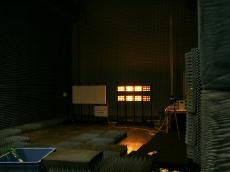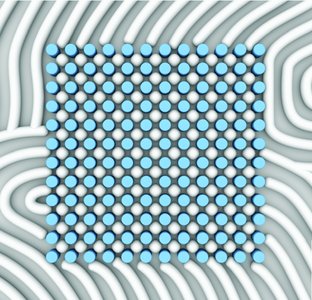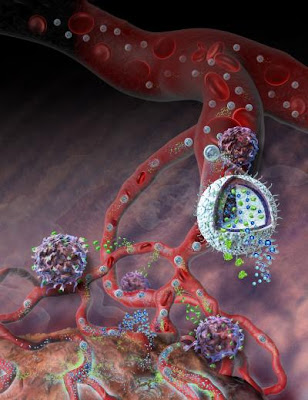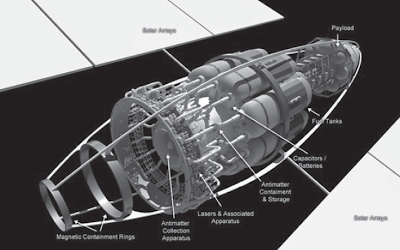Click here to read this mailing online.
|
Successful prototype of 10kW high efficiency rectenna for wireless power for electric trucksVolvo Technology Japan Co., Ltd. and Nippon Dengyo tools, aim to commercialize wireless power transmission. It is essential to the spread of environmentally friendly electric trucks and buses. Power from the outside of the vehicle is provided wirelessly. They have built a high efficiency rectenna.
A high efficiency system (84%) could be used to beam power to electric cars and trucks that are parked at stop lights or in parking lots. There would be no need to use plugs and outlets.
The prototype high efficiency rectenna is uses microwaves. It beams power from outside the vehicle and rectifier circuit is mounted on the vehicle side to gather the power. It was previously thought that the development of microwave power beaming would be a long, difficult process and practical efficiency of the rectenna would be low. There were able to double the efficiency (from 40% to 80% efficiency) when 10 kilowatts of power were supplied to a vehicle 4 to 6 meters away in an experiment. Nihon Dengyo Kosaku and Volvo Technology Japan succeeded in wirelessly transmitting more than 10kW of electricity to a distance of 4m or more. Read more » Self assembly of functionalized rectangular nanostructuresAdvanced Materials - Rectangular Symmetry Morphologies in a Topographically Templated Block Copolymer
Using an array of majority-block-functionalized posts makes it possible to locally control the self-assembly of a block copolymer and achieve several morphologies on a single substrate. A template consisting of a square symmetry array of posts produces a square-symmetry lattice of microdomains, which doubles the areal density of features. This follows up work on self assembling nanowires and junctions. Read more » Nanolipogel delivers multiple cancer treatments to boost survival ratesNSF - researchers have developed a novel system to simultaneously deliver a sustained dose of both an immune-system booster and a chemical to counter the cancer's secretions, resulting in a powerful therapy that, in mice, delayed tumor growth, sent tumors into remission and dramatically increased survival rates.
This illustration depicts a nanolipogel, developed at Yale University with NSF support, administering its immunotherapy cargo. The light-blue spheres within the blood vessels and the cutaway sphere in the foreground, are the nanolipogels (NLGs). As the NLGs break down, they release IL-2 (the green specks), which helps recruit and activate a body's immune response (the purple, sphere-like cells). The tiny, bright blue spheres are the additional treatment, a cancer drug that inhibits TGF-beta (one of the cancer's defense chemicals). Credit: Nicolle Rager Fuller, NSF Nature Materials - Combination delivery of TGF-β inhibitor and IL-2 by nanoscale liposomal polymeric gels enhances tumour immunotherapy Read more » NASA Mars Rovers for 2018 to 2020 will have larger parachute and atomic clocksA possible rover mission to Mars within the next eight years may rely on a larger parachutes, atomic clocks and inflatable decelerators, NASA's Mars exploration chief says. NASA expects to have up to $800 million to spend on mission in 2018 or 2020. The 1 ton Curiosity rover that is arriving Aug 5, 2012, had a $2.5 billion budget.
The inflatable decelerators, also known as ballutes, and big parachutes would help the spacecraft reduce its speed through the Martian atmosphere, while the atomic clocks would improve its landing accuracy.Read more » Vacuum to Antimatter-Rocket Interstellar Explorer System (VARIES): A Proposed Program for an Interstellar Rendezvous and Return ArchitectureVacuum to Antimatter-Rocket Interstellar Explorer System (VARIES): A Proposed Program for an Interstellar Rendezvous and Return Architecture (9 pages)
H/T to Discovery Space News (Ian O'Neill) Using Lasers and Antimatter to Trek to the Stars. While interstellar mission have been explored in the literature, one mission architecture has not received much attention, namely the interstellar rendezvous and return mission that could be accomplished on timescales comparable with a working scientist’s career. Such a mission would involve an initial boost phase followed by a coasting phase to the target system. Next would be the deceleration and rendezvous phase, which would be followed by a period of scientific data gathering. Finally, there would be a second boost phase, aimed at returning the spacecraft back to the solar system, and subsequent coasting and deceleration phases upon return to our solar system. Such a mission would represent a precursor to a future manned interstellar mission; which in principle could safely return any astronauts back to Earth. VARIES Mk 1 design based on discussions of critical systems with project artist. Solar panels extract energy from the target star and power either quantum batteries or ultra powerful capacitors. These, in turn, power a laser which generates Schwinger antiparticle pairs from the vacuum, which are then stored for propulsion. (Adrian Mann) Read more » More Recent Articles
|






